Giant’s Causeway and Causeway Coast
By Cindy Carlsson
What is the Giant’s Causeway and Causeway Coast?
The Causeway Coast extends for 30 km (less than 20 mi) along the North Atlantic coast of County Antrim in Northern Ireland, and much of it is protected under numerous agreements. However, the UNESCO World Heritage site covers only 2.4 sq km (less than 1 square mile) of this area.
Disclosure: This article contains affiliate links. Making a purchase through an affiliate link will mean a small commission for this website. This will not affect your price.
The most famous part of the site, the Giant’s Causeway, makes up about 1/3 of the World Heritage site. This is where some 40,000 interlocking polygonal stone columns form a “pavement” leading into the sea. Legend describes this as a causeway a giant named Finn McCool (Fionn mac Cumhail) built in order to meet and fight a Scottish giant. In actuality, the site formed around 60 million years ago when layers of liquid lava spread across a plain, slowly cooled, and then cracked as it dried. Over millions of years, erosion exposed and weathered the formation to create the appearance of a vast pavement and stairs.
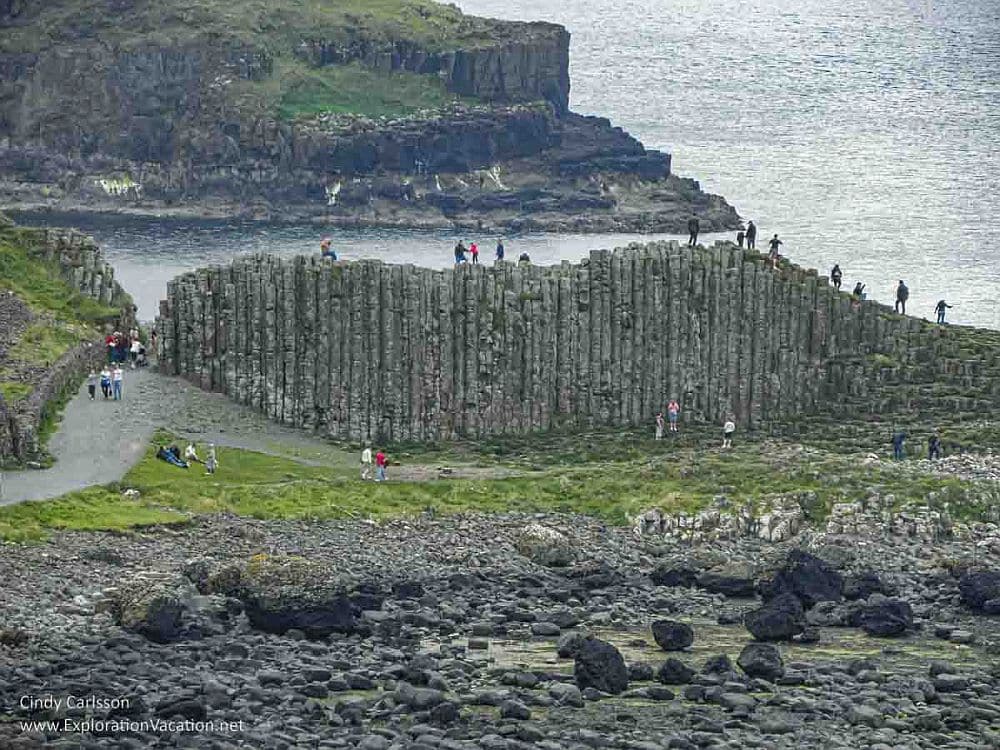
Why is the Giant’s Causeway a UNESCO World Heritage site?
The Giant’s Causeway and Causeway Coast is a World Heritage site because the area’s spectacular geology is beautiful, unusual, and clearly exposes the geological record of its creation.
UNESCO states: “The cliff exposures of columnar and massive basalt at the edge of the Antrim Plateau present a spectacle of exceptional natural beauty. The extent of visible rock sections and the quality of the exposed columns in the cliff and on the Causeway combine to present an array of features of considerable significance.”
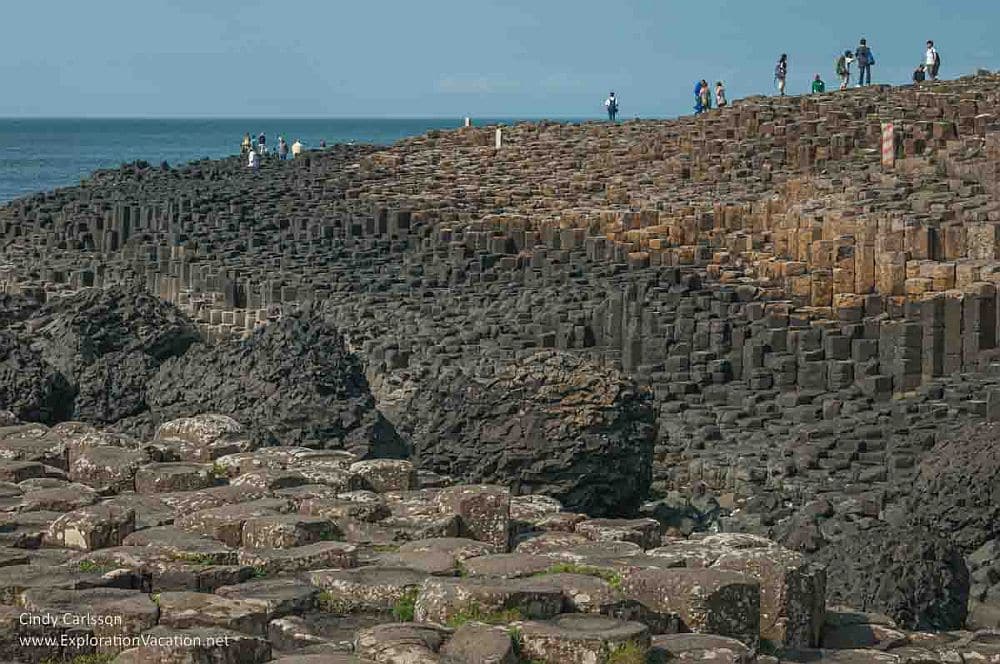
What can you expect on a visit to the Giant’s Causeway and Causeway Coast?
The Giant’s Causeway and the Causeway Coast UNESCO site is both odd and beautiful.
Along the sea, the causeway area is a fascinating spot to explore, with a mix of stone “pavement” and broken pillars. It’s a wonderful spot to just sit and watch the sea. And it is also the most crowded area, as local families and tourists alike visit and linger here.
Fewer visitors follow the paths that lead either along or above the cliffs and beyond. The walk along the cliff features many of the same polygonal (mostly hexagonal) pillars as the causeway area, but here most of the columns are still embedded in the cliff. Paths on the clifftop don’t offer up-close views of the odd rock formations, but provide sweeping views over the coast and the Giant’s Causeway below.
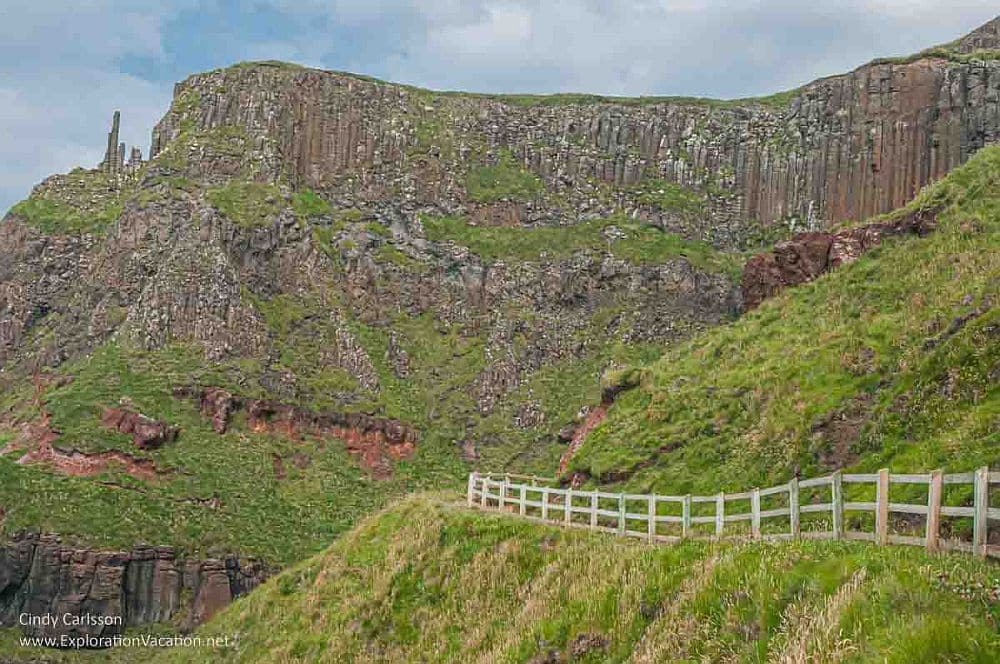
Is the Giant’s Causeway worth visiting?
Yes, the Giant’s Causeway is worth visiting. Although there are plenty of other places on the planet where polygonal columns are found, this is one of the largest and most dramatic examples that is easy to access, especially if you are in Europe.
Even if you aren’t particularly interested in geology, it’s a strange and beautiful area that should intrigue just about anyone. As such, the Giant’s Causeway is very much worth adding to any trip to Northern Ireland or Ireland.
Most visitors should plan on spending between a few hours to a half-day to see the causeway part of the site and a few nearby features like the Amphitheater. However, if you are in a hurry, make a quick stop at the visitor center and take the shuttle down to the Causeway for a look around. You can be back on the road in little more than an hour. On the other hand, hikers and bird watchers could easily spend a day or two exploring this UNESCO site and surrounding area.
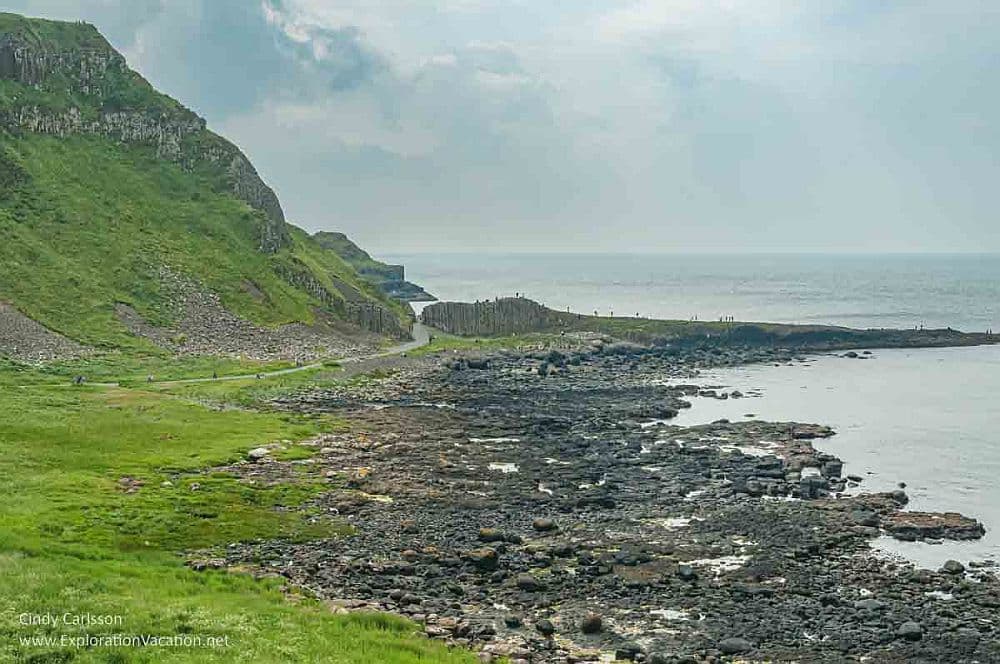
Tips for visiting the Giant’s Causeway and Causeway Coast
The Causeway Coast is open to the North Atlantic, so very high winds and large waves are regular occurrences and potentially deadly. It’s not a place to visit on a stormy day.
If the weather is pleasant, you’ll have lots of company at the Giant’s Causeway and nearby trails. It will be the least crowded first thing in the morning when the site opens and again at dusk.
The visitor center outside the UNESCO site will answer anyone’s questions about visiting, but a fee is required to see the exhibition or use other services.
Although much of the site is only accessible via walking paths, the main causeway feature can be reached via shuttle for a small fee. The unpaved Green Trail offers clifftop views that are wheelchair accessible.
This is a popular tourist site, but both lodging and dining in the immediate area is limited. Plan ahead if you want to spend the night nearby. Otherwise, there are plenty of options about 20 minutes away in the pleasant town of Portrush.
Book your accommodations near Giant’s Causeway or in Portrush.
The Bushmills distillery is just down the road from the Giant’s Causeway parking area. Tours and tastings are available most days. Reservations may be required.
The ruins of Dunluce castle are a scenic 6 km (4 mi) walk from the Giant’s Causeway.
Farther along the coast, the Carrick-a-Rede rope bridge hangs 30 meters (100 feet) above the sea and provides access to a tiny rock of an island long used by salmon fisherman.
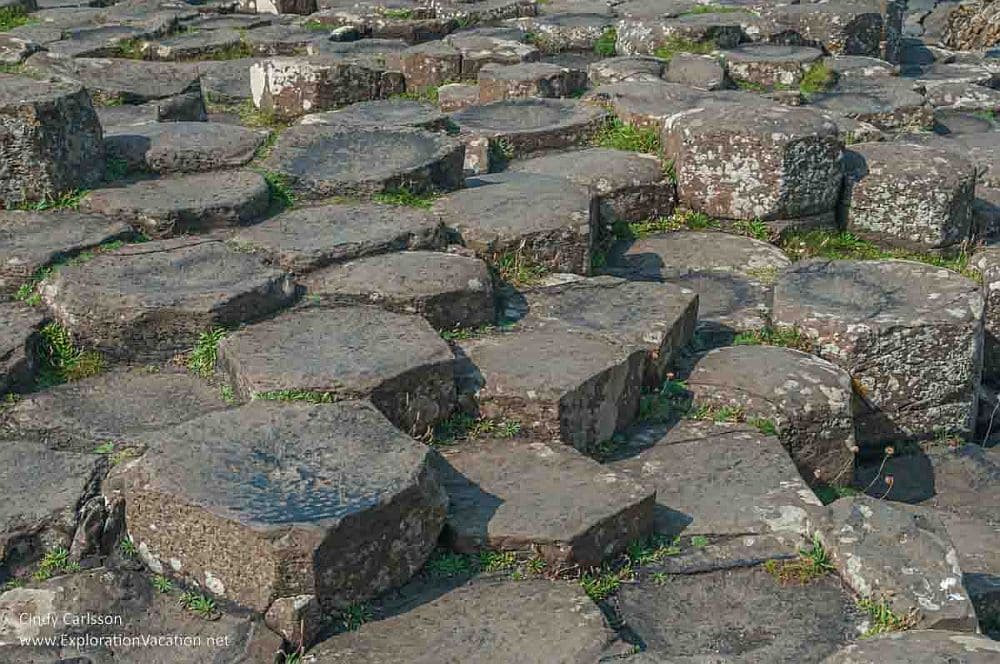
Where is the Giant’s Causeway and Causeway Coast?
The Giant’s Causeway and Causeway Coast World Heritage site is located along the northern coast of County Antrim in Northern Ireland. The causeway area is northeast of the visitor center and parking area. The nearest town with a transit connection is Bushmills, about 4 km (2.5 mi) from the UNESCO site.
From Belfast it’s just under 100 km (60 mi) or a 1½-hour drive to travel from the city center to the Giant’s Causeway visitor center. The trip is slightly shorter coming from Belfast’s international airport. Regular rail service is available to nearby Coleraine, with a bus connection to Bushmills. That can take over 3 hours.
An easier option is to take a tour from Belfast to Giant’s Causeway.
The trip from Dublin is about 270 km (170 mi) and takes more than 3 hours. It’s a bit quicker leaving from the Dublin airport. It takes about twice the time to make the trip via bus and rail.
Alternatively, take a tour from Dublin to see Giant’s Causeway.
Parking is available at the Giant’s Causeway visitor center if you purchase a visitor center Experience ticket. Otherwise, the nearest parking is farther along the road to Bushmills. That lot also requires a fee. There really isn’t any free parking near the Visitor Center unless you have lodging in the area.
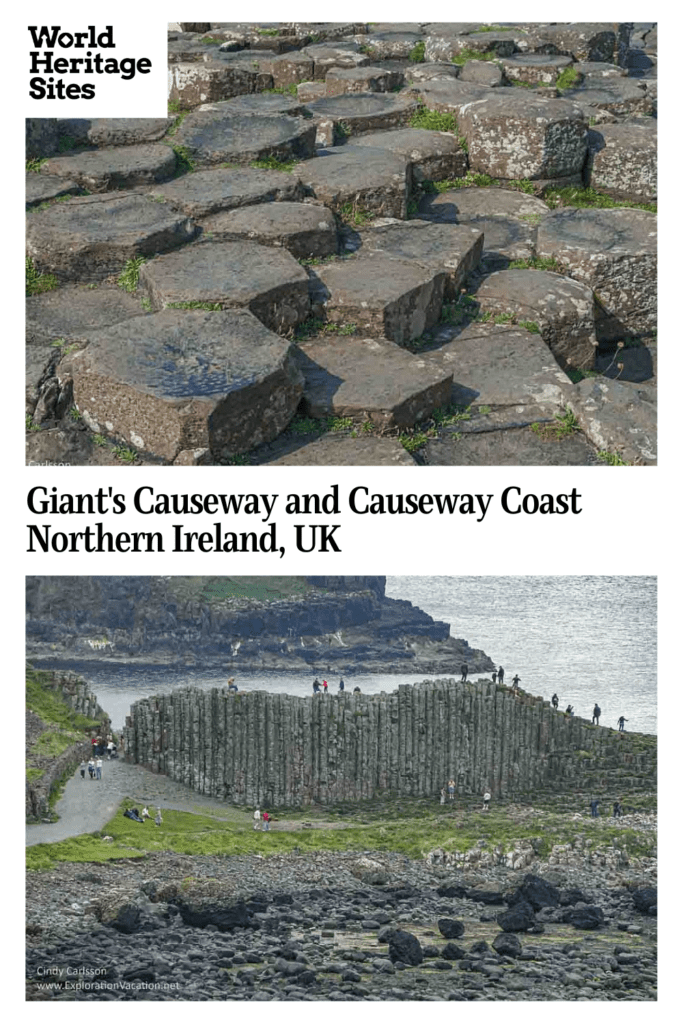
For more information about the Giant’s Causeway and Causeway Coast, its opening hours and admission fees, see its official website.
Have you been to Giant’s Causeway and Causeway Coast? If so, do you have any additional information or advice about this UNESCO World Heritage site? Please add your comments below!
